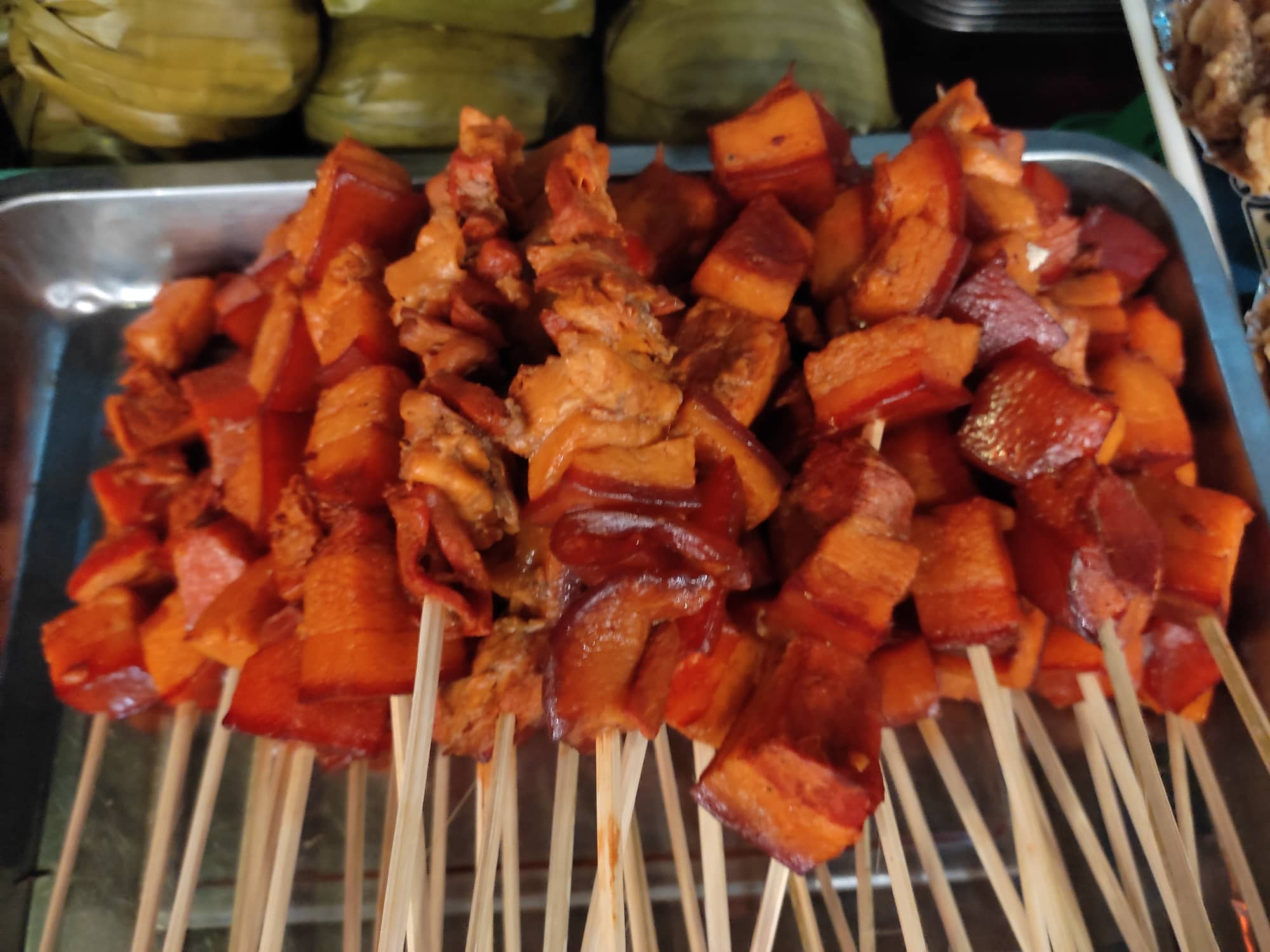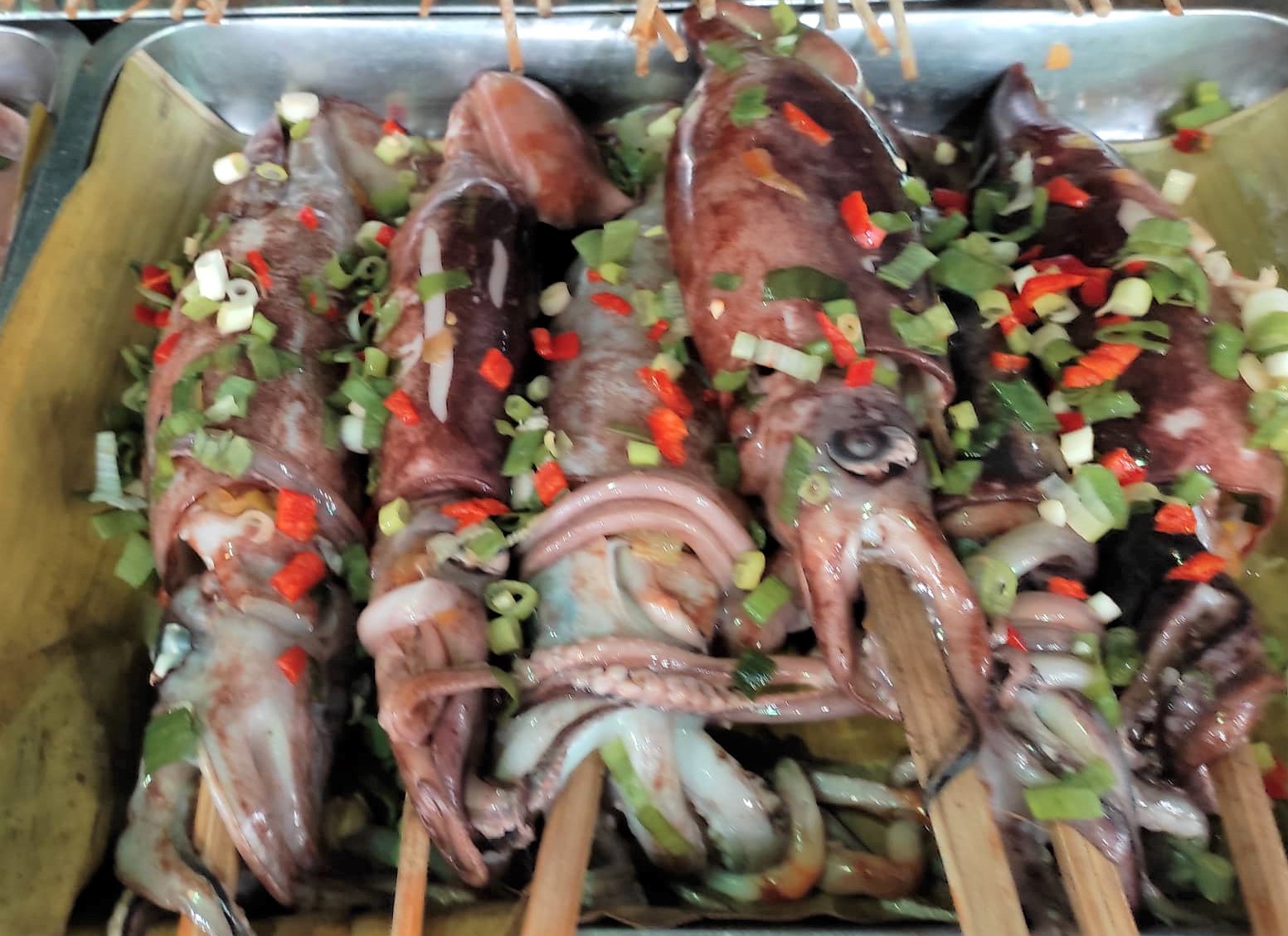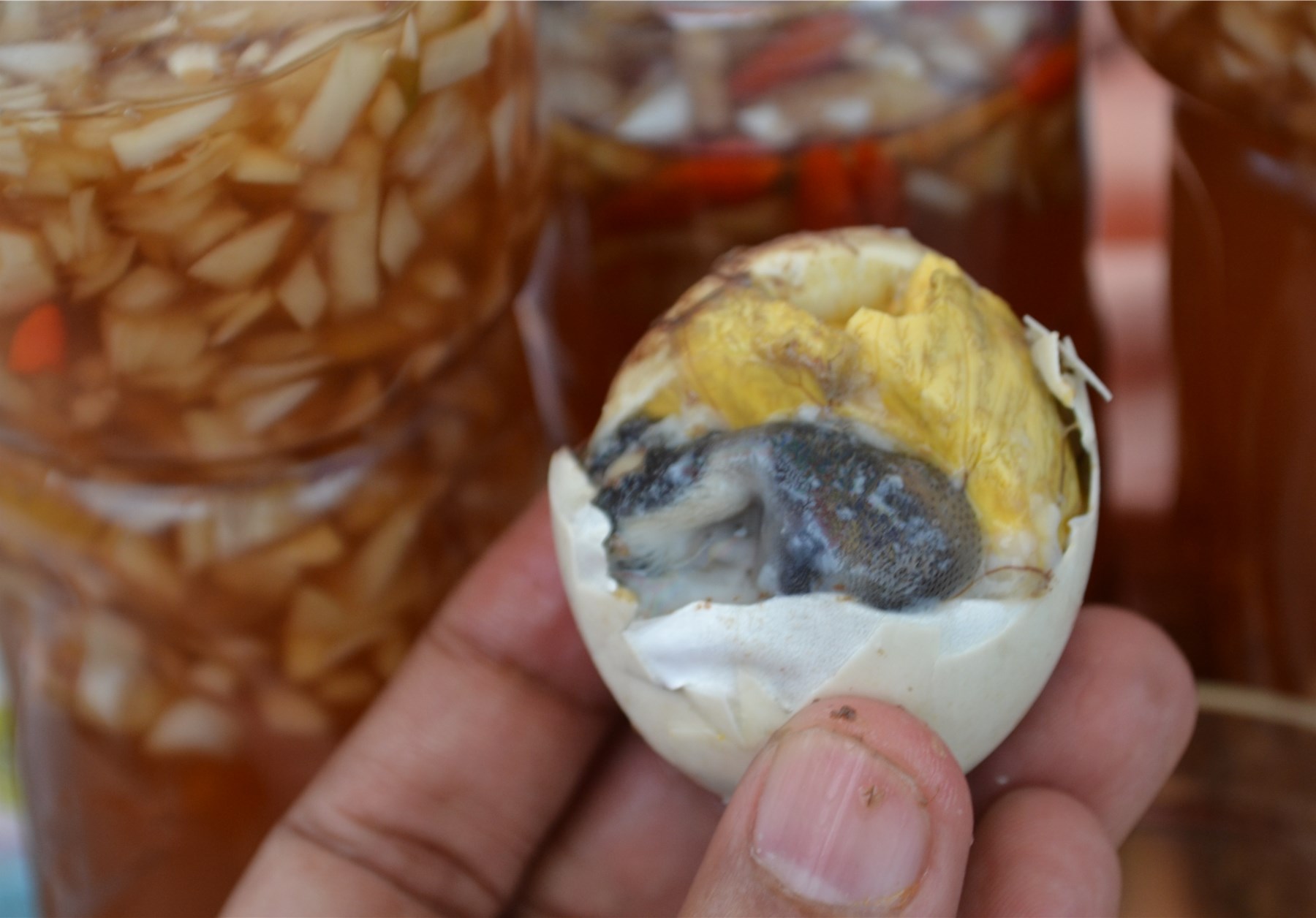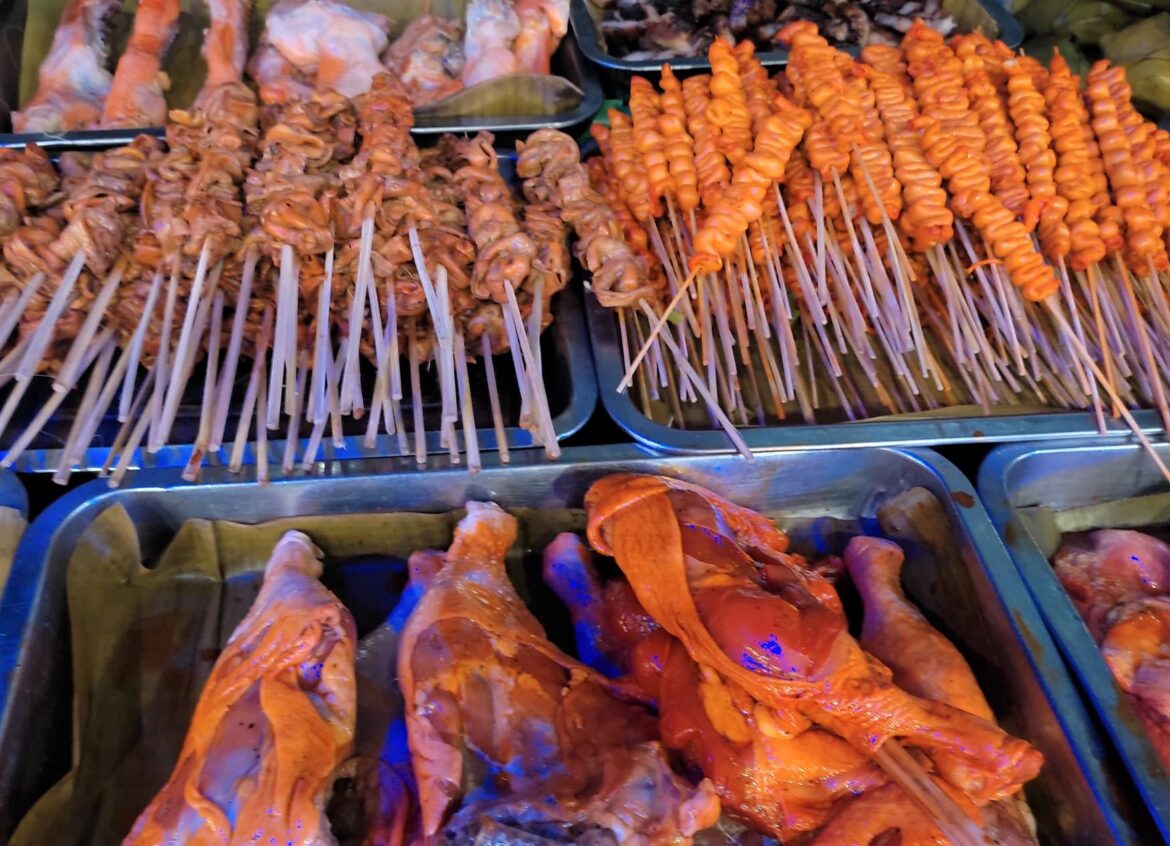Text and Photos by Henrylito D. Tacio
Diarrhea is one health problem that is bound to stay in the Philippines – thanks to street foods and contaminated drinking water.
As defined by the Geneva-based World Health Organization (WHO), diarrhea is “the passage of three or more loose or liquid stools per day (or more frequent passage than is normal for the individual).”
Generally, diarrhea is a symptom of an infection in the intestinal tract, which can be caused by a variety of bacterial, viral, and parasitic organisms. Infection is spread through contaminated food or drinking water or from person to person as a result of poor hygiene.
Recently, diarrhea made news nationally as six people have died as a result of it. The culprit was reportedly traced to the street foods (although not yet confirmed) eaten that were sold in some food stalls in Toril District.
If you have the opportunity of roaming around the streets in some big cities of the country, you get a feeling that selling foods in the street is normal.
Wherever you go, there are always foods – weird in some ways, exotic in other ways – that can satisfy your cravings or ease the pain of hunger. Or something to try and talk about with your friends and families.
Davao, the biggest city in the country in terms of land area, is known for its Roxas Avenue Night Market.
One visitor who had experienced dining out with friends at the said place wrote: “We had a great time eating freshly grilled food – from pork barbecue to grilled squid, to barbecue longganisa, etc. We ate rice that is in a banana leaf. It was like my childhood all over again. The foods were varied and cheap. Try the buchi which is served hot and freshly cooked.”
Night markets, where food streets are a common thing, is getting popular even outside Davao City. There are some night markets in Tagum City, Davao del Norte and Digos City, Davao del Sur.
If you have been to Thailand, Malaysia, Indonesia, Cambodia, and Vietnam, you may feel at home since street foods are also widespread.
But mind you, street foods are also prevalent in industrialized countries like the United States and Australia. When I visited New York and Melbourne, I observed some people selling street foods along the alleys.
“Street food is ready-to-eat food or drink sold by a hawker, or vendor, in a street or other public place, such as at a market or fair,” Wikipedia states. “It is often sold from a portable food booth, food cart, or food truck and meant for immediate consumption.”


In the Philippines, there are many types of foods sold in the street, to name a few: kwek-kwek (made of quail eggs covered with orange dough and deep fried), isaw (chicken intestine put on a stick and grilled), fish balls (minced fish rolled into balls), balut (pre-hatched duck egg), betamax (cubed, curdled blood of a chicken), adidas (the marinated grilled chicken’s feet), atay (marinated and barbequed liver of chicken), and helmet (the grilled head of a chicken).
Other fillers of hungry stomach are: maruya (a combination of banana and flour, deep fried until golden brown), kikiam (made of ground pork and vegetables wrapped in bean curd sheets then deep-fried), calamares (deep-fried buttered squid rings), mais (corn on a cob, but it could also be salted boiled corn), and green mango with bagoong (unripe mango on a stick with a salty, fermented sauce or paste made from small shrimps or fish).
For drinks, the following are common: buko juice (coconut water that can be drunk directly from the buko itself), iskrambol (a simple shake with artificial flavors), and sago and gulaman (a refreshingly cold drink made out of tapioca and jelly).
Most street foods are classed as both finger food and fast food, and are cheaper on average than restaurant meals. In 2007, a research conducted for the UN Food and Agriculture Organization (FAO) found that 2.5 billion people eat street foods every day.
In the Philippines, selling street foods is becoming an important economic activity as it feeds hungry millions and provides employment and income to 80-90% of the country’s urban poor, according to a study done by the Food and Nutrition Research Institute (FNRI).
“There’s nothing like the street food business: small capital, convenient location, no space rentals and sometimes no power or water bills to pay for,” wrote Ronald M. Henson in an article which appeared in The S&T Post, a publication of the Department of Science and Technology (DOST).
Local authorities, international organizations, and consumer associations are increasingly aware of the socioeconomic importance of street foods but also of their associated risks. “With the increasing pace of globalization and tourism,” FAO said, “the safety of street food has become one of the major concerns of public health, and a focus for governments and scientists to raise public awareness.”
A DOST study conducted some years back discovered that most of the samples taken from the street foods sold in four urban centers – in Davao, Cagayan de Oro, Laguna and University of the Philippines Diliman campus in Quezon City – did not pass quality standards.
(Some previous studies conducted by FNRI showed that microorganism contamination of street food was mainly due to poor handling and unhygienic practices of both vendors and consumers.)


In the DOST study, microbiological findings indicated the presence of coliforms such as Escherichia coli, Enterobacterae aerogenes, and E. cloacae in both barbecued and deep-fried animal by-products. This means that the bacteria load of the selected food samples was rather high, ranging from 240 to 2,400 per gram of food.
In a study done by the US-based Equity Policy Center, it was found that the largest single problem of the street food industry in most of the developing countries is the lack of access to clean water for washing utensils and hands.
“Where clean water is hard to obtain, a single bucket of untreated water might serve throughout the day, a banana leaf floating on top to hide the filth,” the study noted.
One of the health problems people may suffer from eating bacteria-laden street foods is diarrhea.
“Diarrhea is a leading cause of child mortality and morbidity in the world, and mostly results from contaminated food and water sources,” the United Nations health agency said.
Interventions to prevent diarrhea, including safe drinking water, use of improved sanitation, and hand washing with soap, can reduce disease risk, the WHO added.
Now going back to street food – are they boon or bane? While they are a boon to vendors, street foods are also a bane among consumers. Because of this, concerned sectors – especially those selling near school campuses – are compelled to observe proper sanitation and cleanliness with stringent measures to discourage roadside food vendors from selling unsanitary and junk foods to students.
“Any potential health hazards from street foods,” wrote Henson, quoting FNRI, “can be prevented if we only take the challenges of food quality and safety.”
When the news broke out of the diarrhea outbreak in Toril, and six people were reported dead as a result, Councilor Bernie Al-ag, chair of the Committee on Trade and Commerce, told the press that he was thinking of regulating the selling of street foods.
“I look into this regarding putting some process of permits for the ambulant vendors and putting some requirements of the health certificate for the vendors and health or sanitary training for the operators,” EDGE Davao’s Maya Padillo quoted him as saying.
“I will be looking into this with the Committee on Health regarding the policy on street food or may be a street food ordinance,” he added.
For his part, Mayor Sebastian “Baste” Duterte echoed the same idea. He wanted to impose more requirements, one of which was urging vendors to have health cards before they can sell street foods in the city.
During the Special Hour with Mayor Baste that was aired over Davao City Disaster Radio recently, Duterte stressed: “There will be more requirements. They (vendors) have to comply with health standards.”
It’s just right so that another diarrhea outbreak in Davao City could be avoided!

